Livestock and Dairy Farming
Animals were a crucial part of the village economy in the days before mechanised transport. Horses were used for travel and also for pulling machinery such as ploughs and carts. Cattle and sheep produced meat, milk, wool and leather. Milking cows was part of the daily routine in mixed and dairy farms. Many householders, and not just those primarily engaged in farming, kept pigs, poultry and bees on the crofts at the backs of the farmhouses to provide meat, eggs and honey.
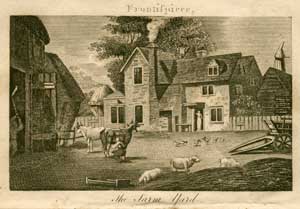
A farmyard, from A visit to a farm-house, by S.W.
(London: Printed for R. Phillips, 1811)
Briggs Collection, LT210.S/W4
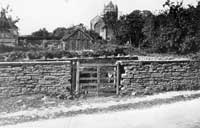
Laxton Pinfold, c.1897-1969
From Chambers Collection Ch Pc 1
Animals found wandering on the highways in Laxton were taken by the Pinder (an official appointed for the purpose) to the Pinfold, a fenced and gated area near the Dovecote Inn. Their owners had to pay a fine to get their livestock released. In Laxton the Pinder was also responsible for monitoring the grazing of livestock on the open fields.
This Pinfold, opposite the Dovecote Inn, was built in 1897. It was removed and replaced in 1969. The new Pinfold, although no longer used to tether stray animals, is on the site of an older Pinfold built in 1800.
Illustration of sheep-shearing from A Picture of the seasons (London: printed for W. Wetton, sold by C.F. Cock, 1831) From Briggs Collection LT210.S/P 4
A few sheep were kept by many households in Laxton. Smallholders and cottagers with toft rights could graze their sheep on the Common in the spring and summer. Edith Hickson tells us that in the 1890s, “Lincoln long-wools seem to have been a popular breed of Laxton sheep, owing to the wool being of more value than mutton.” The wool was shorn in May and sent to auction at the Corn Exchange in Retford
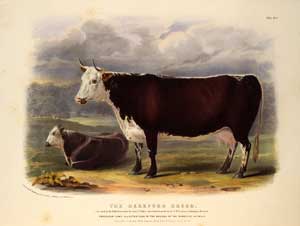
Illustration of a Hereford cow and calf, from David Low, The breeds of the domestic animals of the British Islands
(London: Longman, Orme, Brown, Green, and Longmans, 1842)
Special Collection Oversize SF105.25.G7.L6
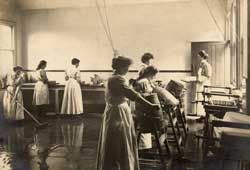
The Butter-making Room at the Midland Agricultural and Dairy College, Kingston-on-Soar, c.1905
From UMP/5/21/1
Farmers’ wives sold butter and eggs at the weekly market in Tuxford in the late nineteenth century. The sale of this farm produce contributed strongly to the family income.
The College shown here was the fore-runner of the Sutton Bonington campus of The University of Nottingham.
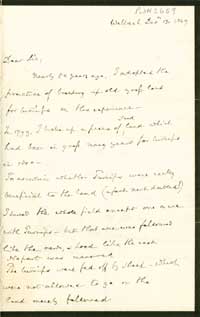
First page of a letter from the 4th Duke of Portland to Henry C. Sherbrooke, 13 December 1849 Portland (Welbeck) Collection Pw H 2659
Crop rotation is important to help the soil recover after the harvest and to avoid a build-up of disease.‘Green manure’ crops, when dug back in, also improve the soil. William Cavendish-Scott-Bentinck, 4th Duke of Portland (1768-1854) took a great interest in agricultural innovation. In the letter on the left he advocates growing turnips instead of leaving land fallow for a year, claiming that almost twice as much barley was produced the next year. The four-field system of rotation which most farms adopted in the nineteenth century (wheat, turnips, barley, then clover) was not suitable for Laxton’s open fields because there were only three fields and because root crops do not grow well on Laxton’s heavy clay soil.
The traditional way to increase the fertility of soil for arable crops is to spread the animals’ muck and straw accumulated over the winter. Farm buildings in Laxton were usually arranged round a square crewyard which could be closed off and used to shelter animals. The centre of the crewyard was often a metre deeper than the level of the stone pavement giving access to the buildings. The ideal aimed at was a self-sufficient relationship whereby the livestock fed off the land, and gave back to the land via their manure.
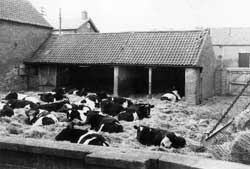
Cattle in the crewyard at Corner Farm, Laxton, 1960s From MS 829/4/53
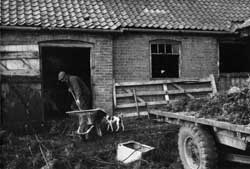
Farmer shovelling straw and manure at Town End Farm, Laxton, 1960s From MS 829/4/74
Online exhibitions